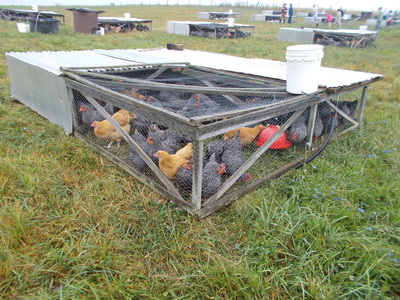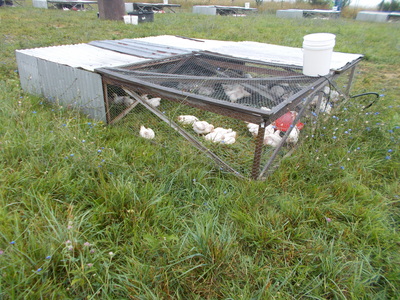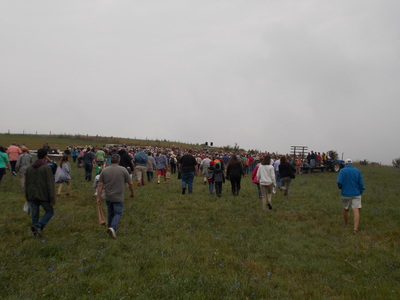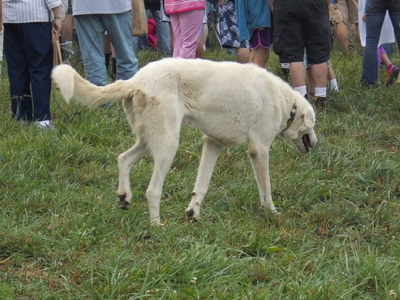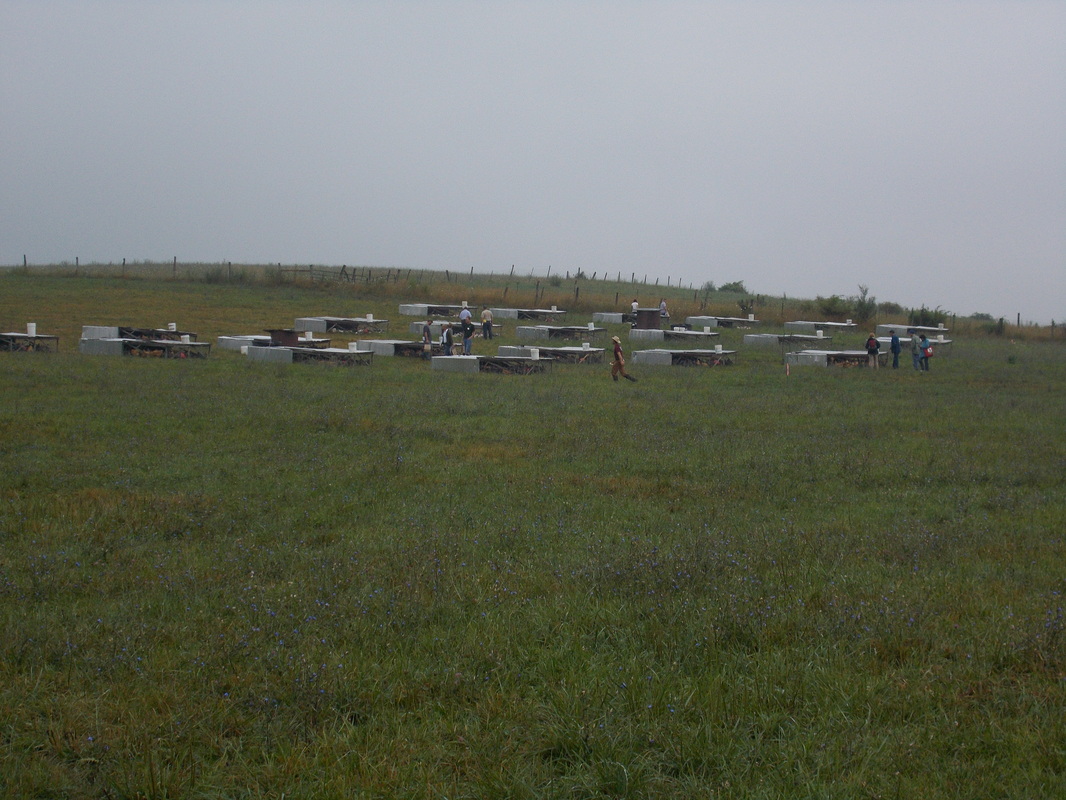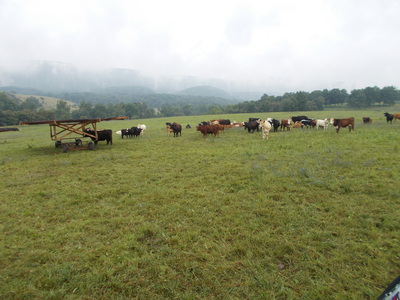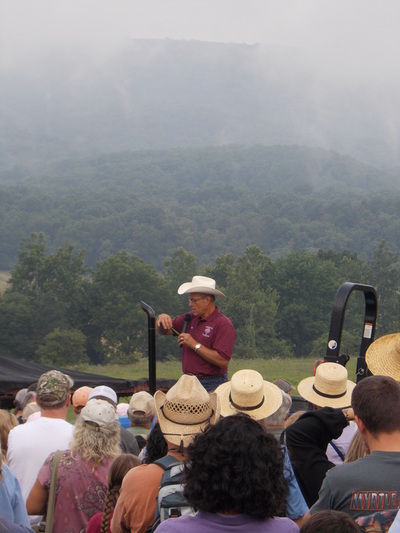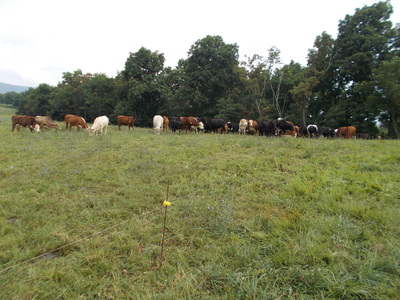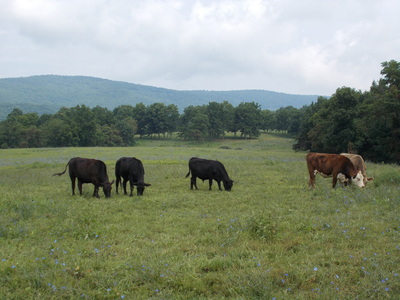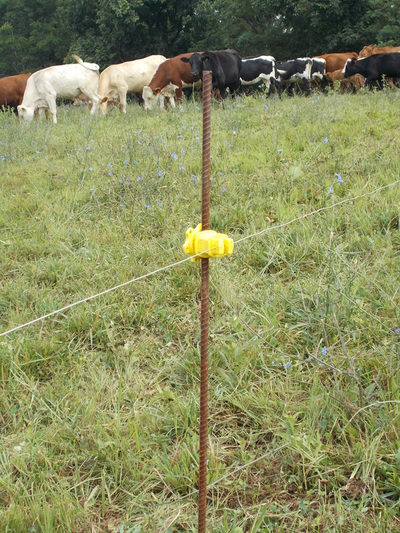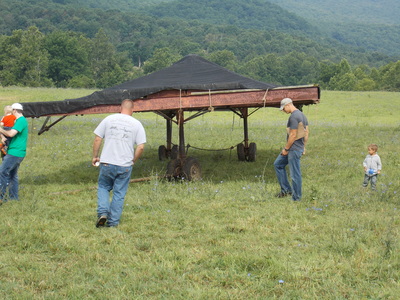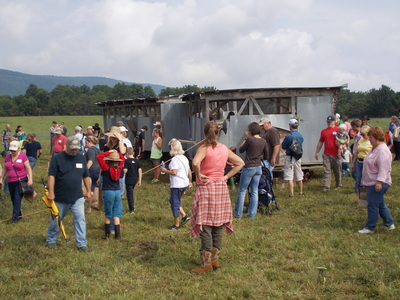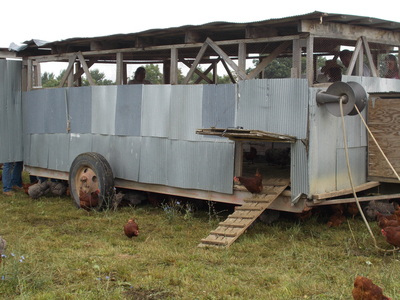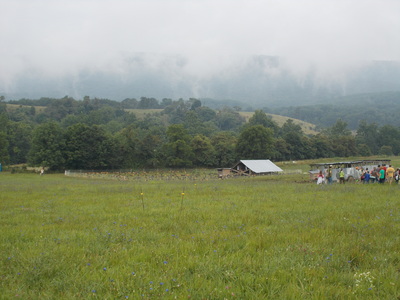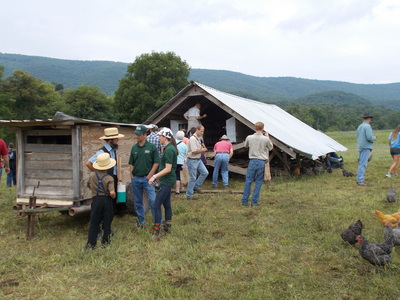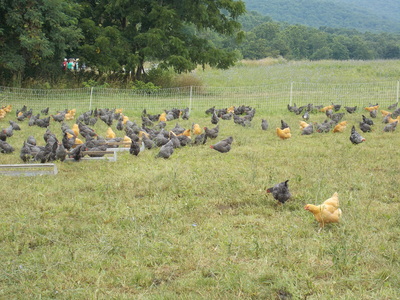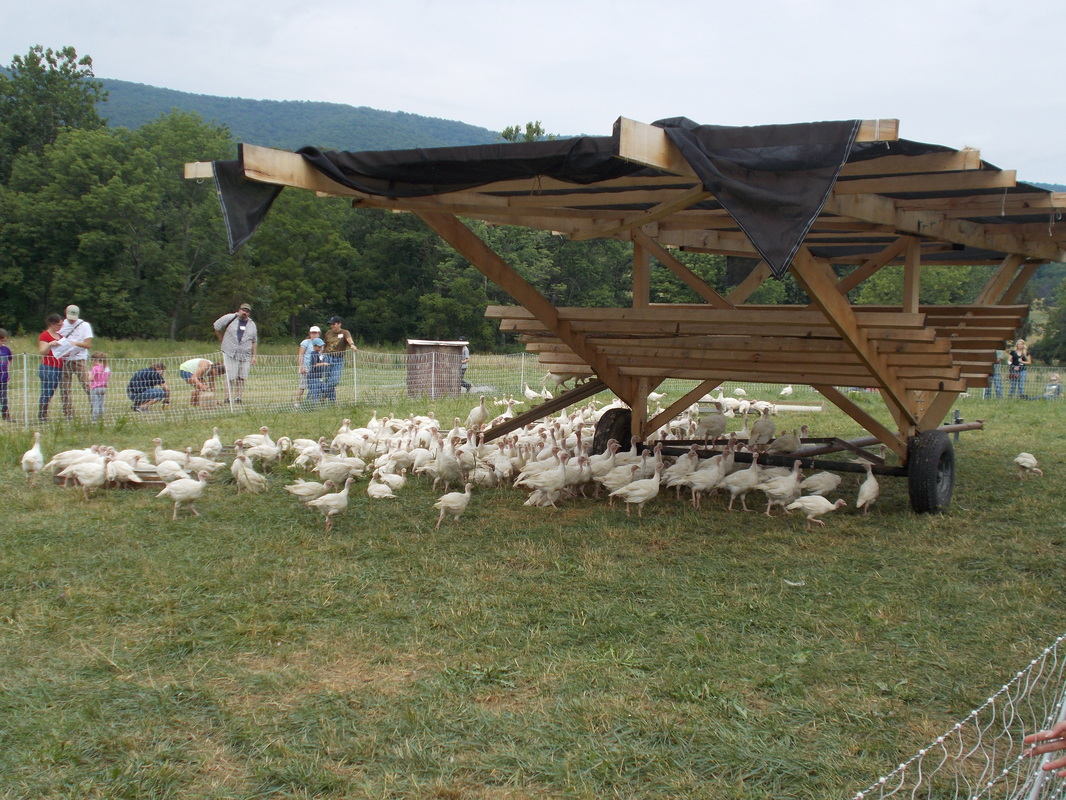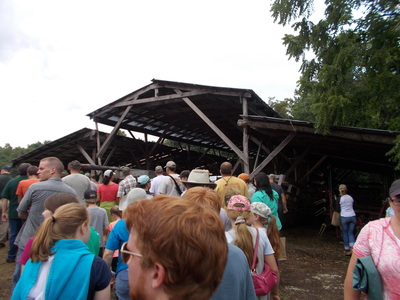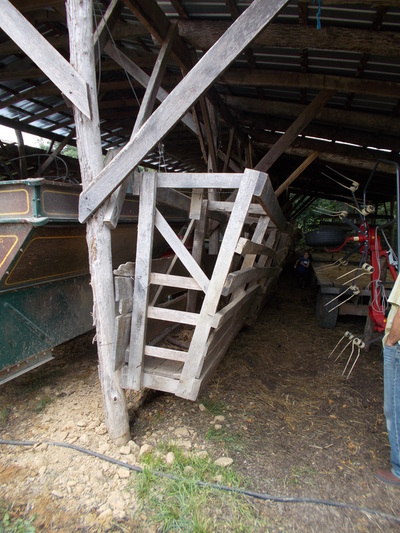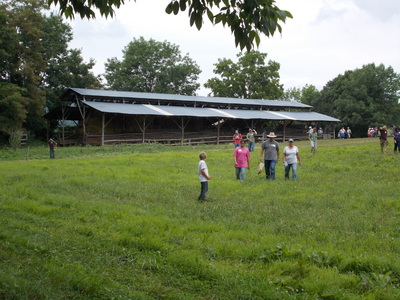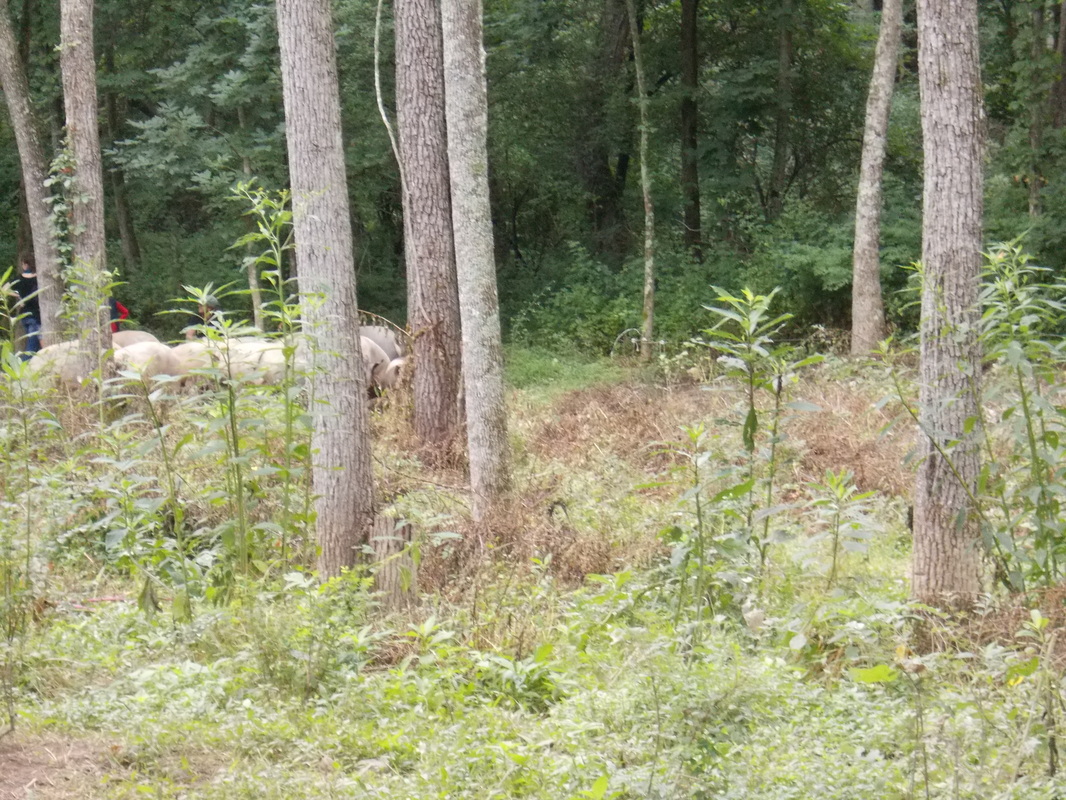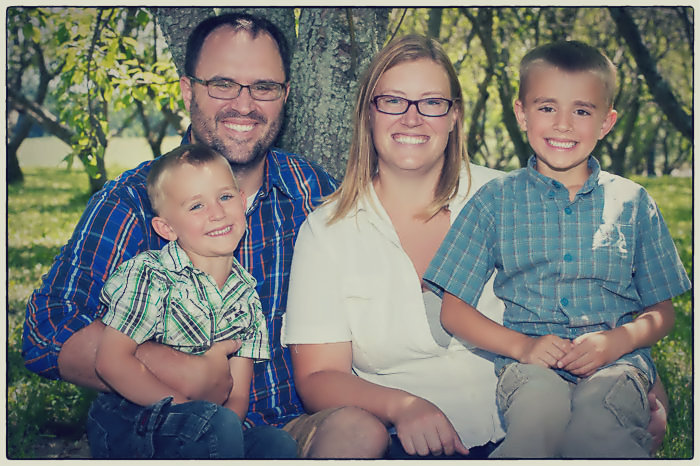
We arrived at the farm at 6:30 a.m. prepared for a long day of touring and workshops. Since none of the scheduled activities took place until 8:00 we had some time to wander around the farm and peek at the buildings, gardens, and animals. It took me all of 30 seconds to get cow poo smeared on my leg.
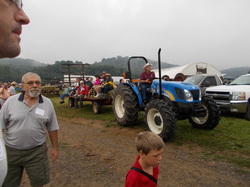
First we visited the pastured broiler shelters. These shelters are also currently housing pullets that just started laying eggs and will soon be replacing old layers in the Eggmobile.
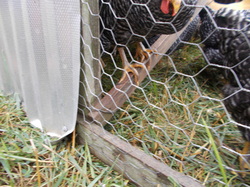
Joel Salatin considers himself to be a grass farmer. His goal at Polyface is to properly manage the pasture by introducing cattle to pasture when the length of the grass is in its "teenage" stage--not too short and not too long, and where grazing results in rapid regrowth. The paddock size should be just right so as to graze every bit of pasture once. If there are lots of areas that are left ungrazed, the paddock size is too large, and if there are areas that are grazed a second time and are too short, then the area is too small.
As the pigs have rooted around in the paddocks they have cleared areas in the previously-forested land, which has naturally filled in with grasses, herbs, and weeds. Joel Salatin referred to this area as a pig savannah. What really impressed us was the complete lack of pig smell; it was a beautiful area that had no odor whatsoever.
- Diana
